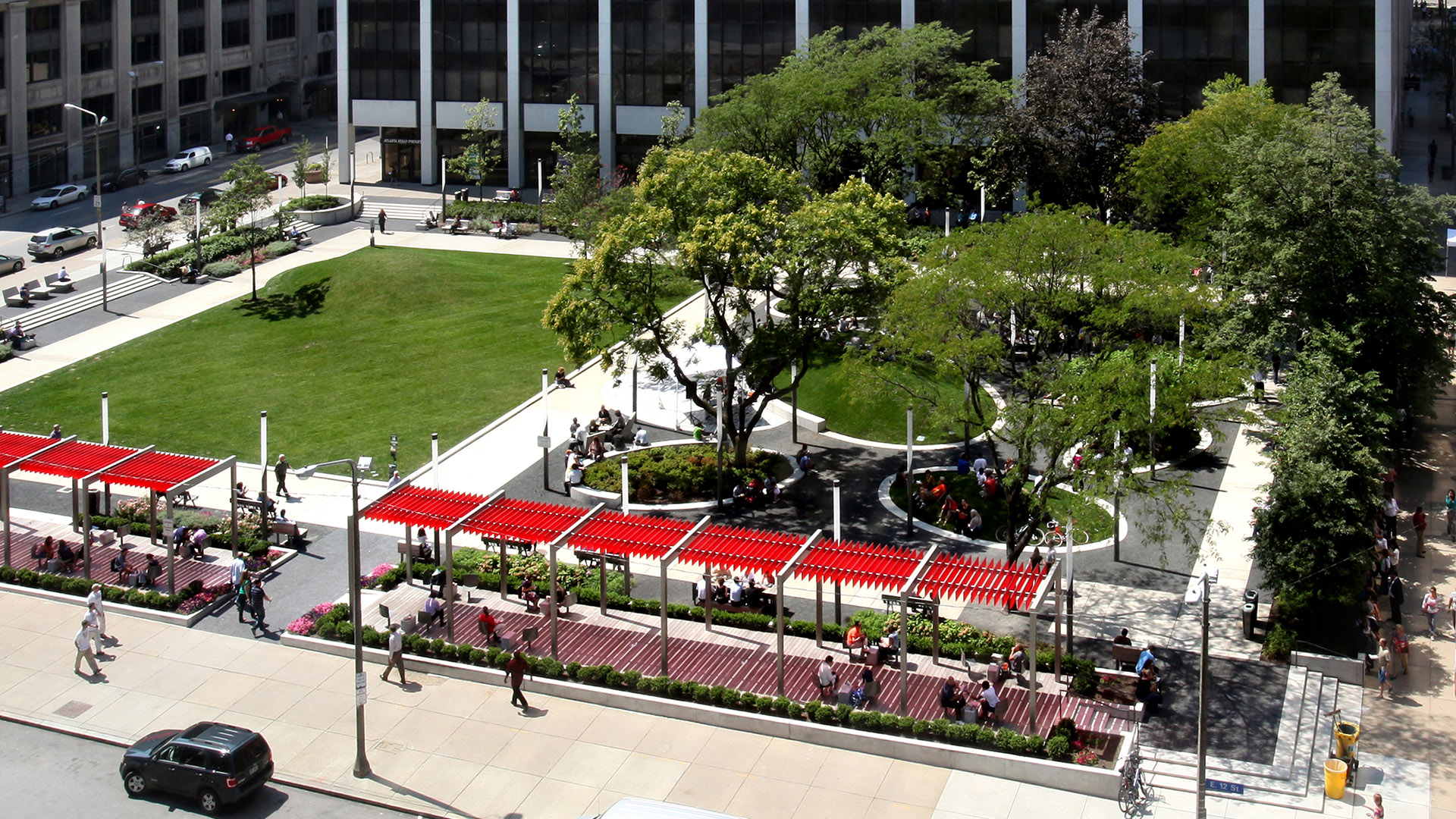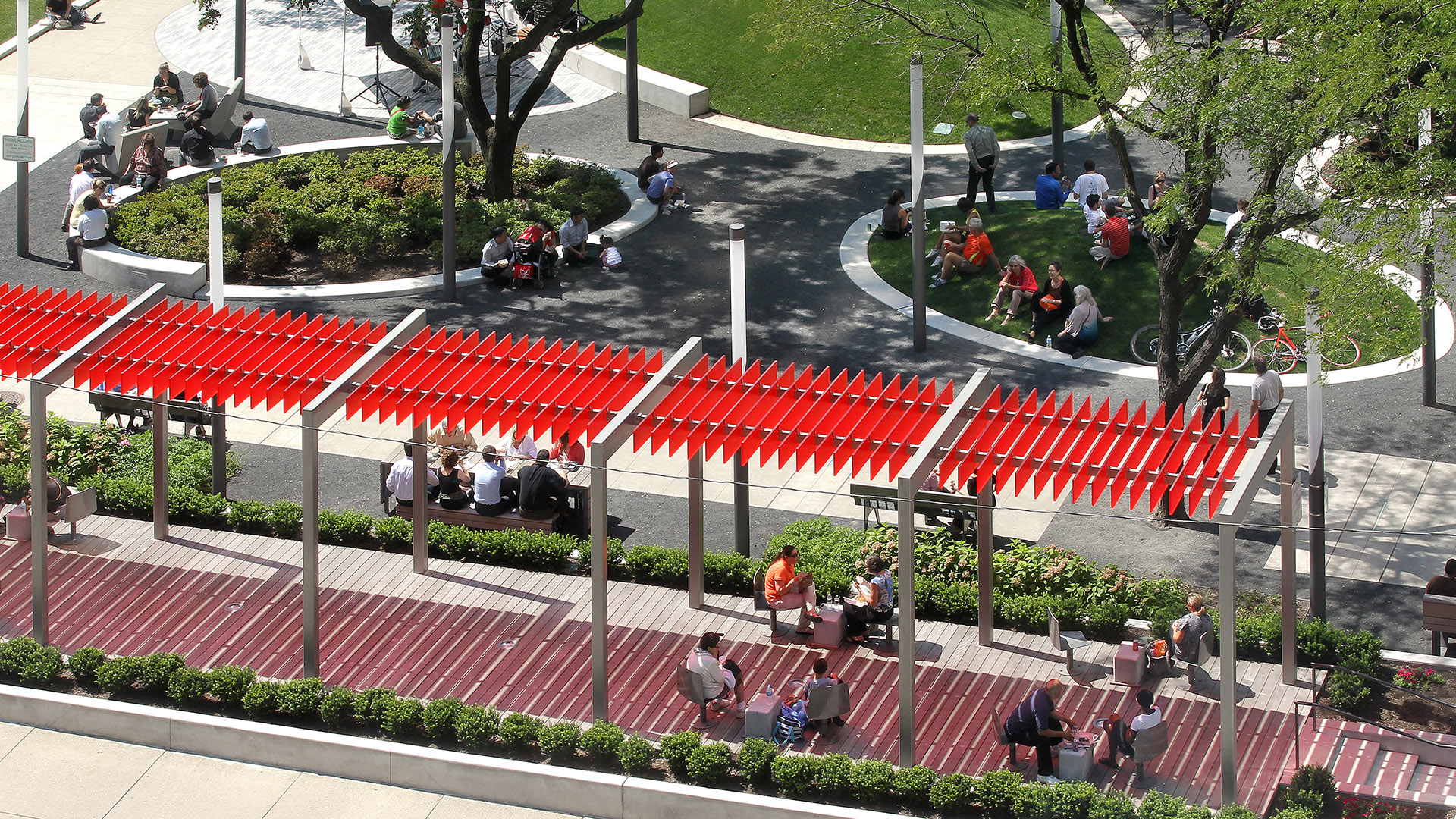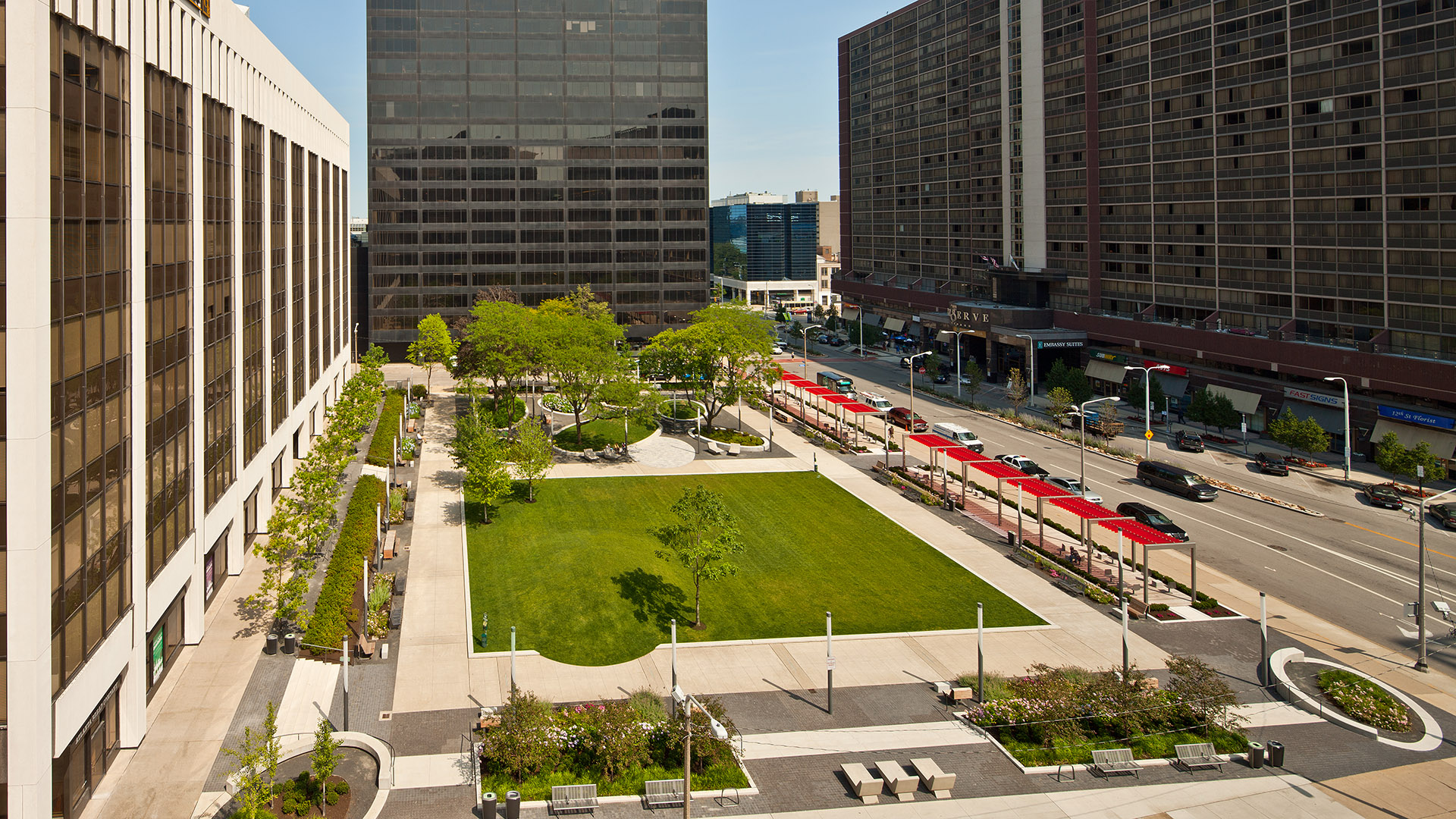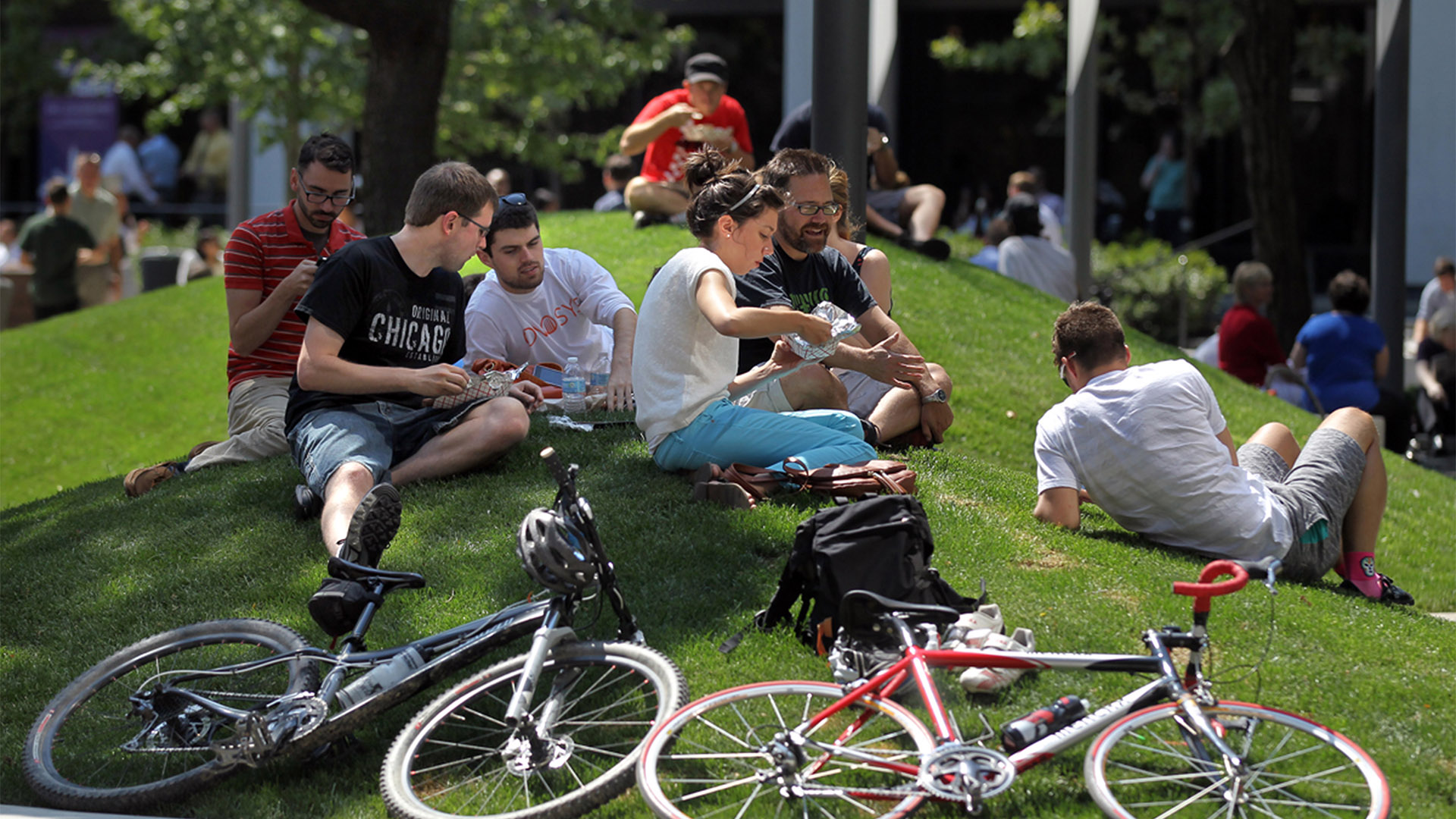Originally completed in 1972, Perk Park is a vestige of IM Pei’s urban renewal plan. It was built in an era when the street was seen as a menace so parks turned inward. Rolling berms around the edges and sunken areas in the middle, filled with concrete retaining walls, reflected that era. Not surprisingly, the park fell into decline; abandoned by the neighborhood and occupied for less desirable purposes.
After years in this condition, the City and Park Works committed public and donor funding toward the park’s redesign and rejuvenation. Thomas Balsley Associates’ plan to reunite the community with its park is strong, simple, and logical. The “forest and meadow” concept preserves the park’s strong points — the mature shade trees and the liminal mounds — but replaces the central sink hole with a wide, sunny lawn on which daily urban life will unfold in its magical myriad of ways.
On the north side, intimate seating areas are created among a grove of large, existing honey locusts which cast dappled shade on a forest floor of crushed stone. The oval mounds provide topographic relief, their gentle swellings in contrast with a geometric grid of 20-foot tall light wands which echo the rhythm of the surrounding architecture space while providing night-time drama. A corner food kiosk and trellised cafe terraces activate the park. Perimeter garden beds and distinctive seating flank the perimeter path whose embedded light strips echo the park’s cadence. The lawn’s formality has been interrupted by a large oval mound on which children play and adults view daily impromptu city life and staged performances. Clear lines of sight replace the huddled bunkers. Choices that range between sanctuary and urban social interaction abound.
Perk Park embodies the untapped potential of small urban public spaces in our cities. A public waste ground has been transformed into a common ground, a source of pride and enjoyment for its neighborhood and Cleveland citizens. It serves as an example of a collective civic will’s vision and fortitude, and the power of design.
Gotham West
Gotham West is a residential development west of Times Square that nearly encompasses a full city block. Two mid-rise buildings and a market-rate tower form to create a signature courtyard that is accessed from the tower’s lobby. A sculptural Japanese maple, floating within a reflecting pool, is centered with the lobby entrance, and serves as a focal feature. ...
Main Street Garden Park
Thomas Balsley Associates was selected from an outreach to international design firms to design the first new park for the Dallas Central Business District in 50 years. A key component in the downtown revitalization strategy, Main Street Garden Park required the razing of two city blocks of buildings and garages making way for its transformation into a vibrant...
Park 101
Description: SWA and John Kaliski Architects are providing landscape architectural and urban design services and advice to the Park 101 Phase 3 study, led by ELP Advisors. The study’s goal is to advance the project from the planning phase to the project implementation phase. SWA is an advisor on programming, design options, development, density, and managing t...
Westshore Park
Complementing the Inner Harbor’s world-famous promenade, Westshore Park has come to be known as the city’s living room on the harbor. The park is strategically located on the innermost shore of the harbor and sandwiched between the new Baltimore Visitor Center and the Maryland Science Center. Having rediscovered its maritime heritage and opened it to the world...











